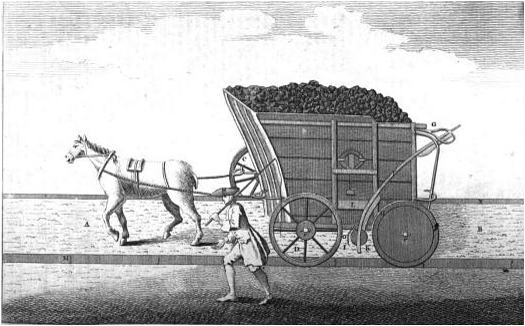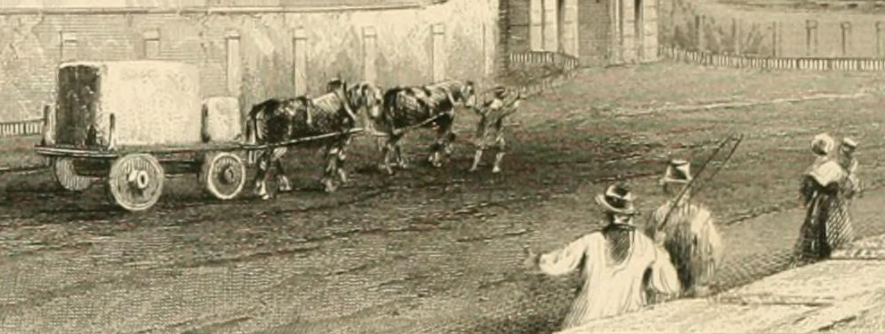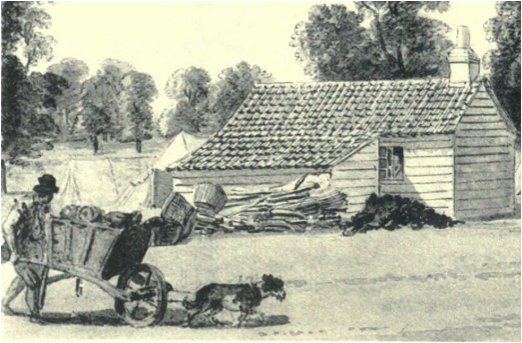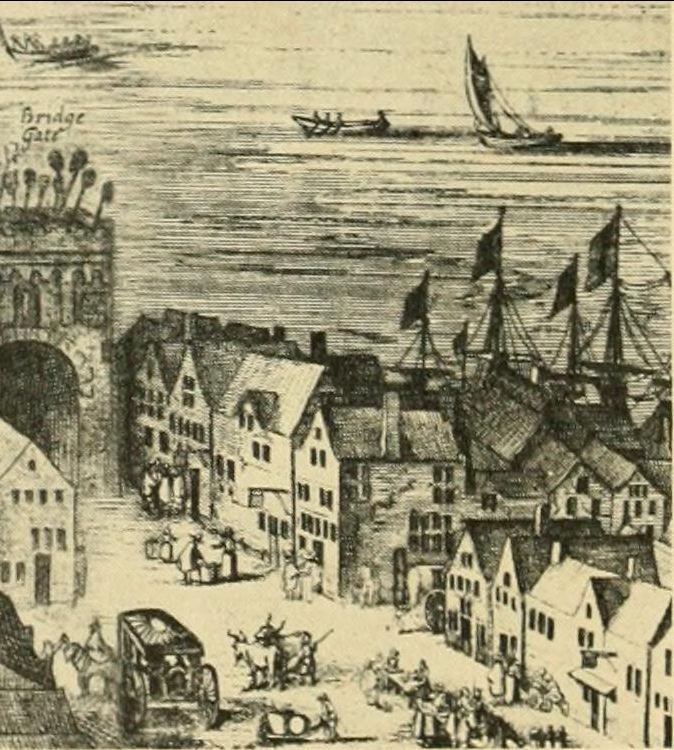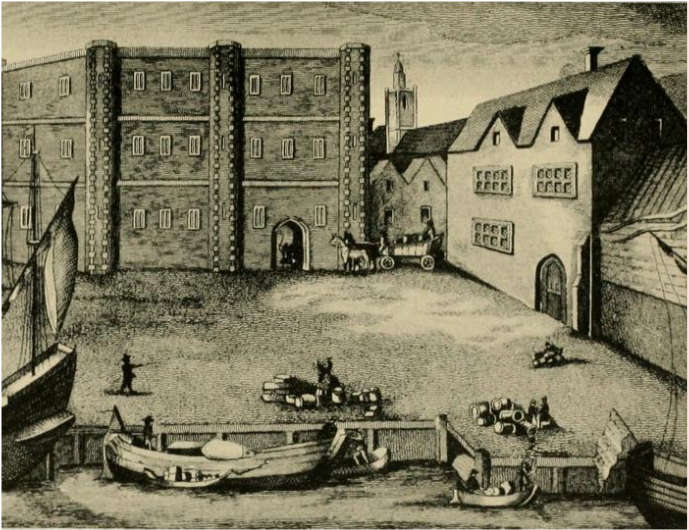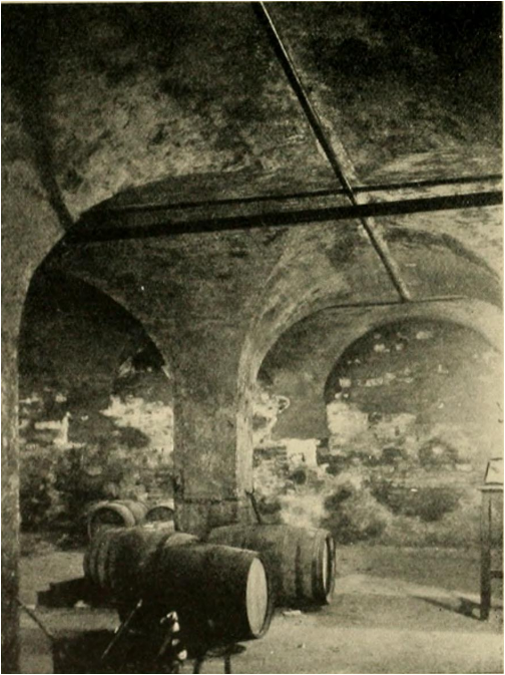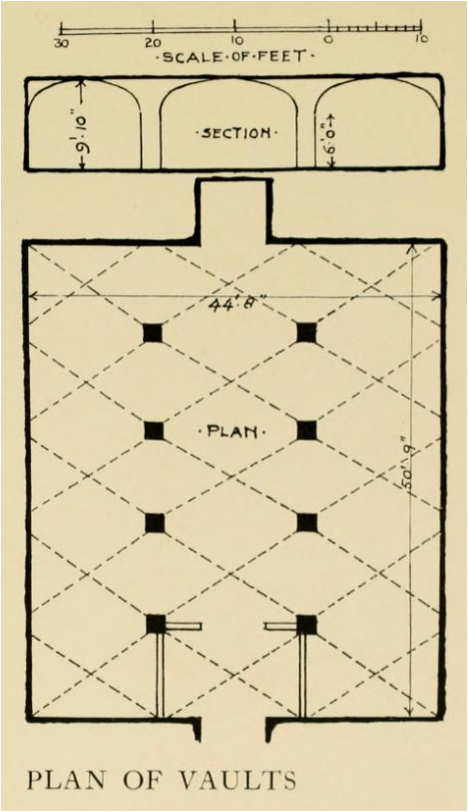MRP: Physical goods handling
Physical goods handling
04/01/12, CSG: Created page
Contents
[hide]- 1 Introduction
- 2 Suggested links
- 3 To do
- 4 Images
- 4.1 Coal-waggon, Gentleman's Magazine, 1764
- 4.2 Cart, Penitentiary, Millbank, 1851
- 4.3 Wheel barrow, Hyde Park, Sandby, 1780
- 4.4 Barrels on south bank of Thames by London Bridge, Vischer, 1616
- 4.5 Barrels on wharf by Old Custom House, London, 1663
- 4.6 Vaults, Site of Old Custom House, 19XX
- 4.7 Plan of Vaults, Site of Old Custom House, 19XX
- 4.8 Image credits & copyright information
- 5 Notes
- 6 Possible primary sources
- 7 Possible secondary sources
Introduction
Suggested links
See Customs
See Trade
See Transport bibliography
To do
Images
Coal-waggon, Gentleman's Magazine, 1764
Cart, Penitentiary, Millbank, 1851
Wheel barrow, Hyde Park, Sandby, 1780
Barrels on south bank of Thames by London Bridge, Vischer, 1616
Barrels on wharf by Old Custom House, London, 1663
Vaults, Site of Old Custom House, 19XX
Plan of Vaults, Site of Old Custom House, 19XX
Image credits & copyright information
(1) Anonymous, 'Coal wagon', in The Gentleman’s Magazine, March 1764, betw. pp. 144 & 145, accompanying article on by "Coal-waggons' by T.S. Polyhistor in same edition[1]
- Book and image are out of copyright
- Sourced from Google Free E-Book edition
(2) Cropped section of plate 23, 'Camp near Serpentine, Hyde Park, 1780,' Paul Sandby, 1780, reproduced in Burlington Fine Arts Club, 'Catalogue of a collection of early drawings and pictures of London with some contemporary furniture' (London, 1920)[2]
(3) Cropped section of frontpiece, Old London Bridge, from Vischer (XXXX, 1616), in London County Council, Survey of London, vol. 22, Bankside (the parishes of St. Saviour and Christchurch, Southwark) (London, 1950)[3]
- Book and image are out of copyright
- Image sourced from Internet Archive copy
(4) Cropped section of print, 'Old Custom House,' Bartholomew Howlett, 1663, Plate 63, in London County Council, Survey of London, vol. XV: the parish of All Hallows Barking (pt. 2) (London, 1934)[4]
- Book and image are out of copyright
- Image sourced from Internet Archive copy
(5) Photograph of 'Vaults on the site of the Old Custom House', date?, photographer?, Plate 62, in London County Council, Survey of London, vol. XV: the parish of All Hallows Barking (pt. 2) (London, 1934)[5]
- Book and image are out of copyright
- Image sourced from Internet Archive copy
(6) Plan of vaults on site of Old Custom House’, extract from Plate 62, in London County Council, Survey of London, vol. XV: the parish of All Hallows Barking (pt. 2) (London, 1934)[6]
Notes
Utility of broad wheels, The London Magazine, April 1756
'The utility of broad wheels demonstrated'[7]
Hint on broad wheels, The London Magazine, June 1756
"It appears by a pamphlet lately published, entitled, An Essay on the present State of the publick Roads, that the only road about London on which broad wheel carriages are used, is from being the worst become the only good one, there not being, in April last, a single rut to be seen for many miles, (see p. 157.) at the same time that the other roads were extremely bad, and this amendment solely owing to the use of broad wheels. We should be obliged to our correspondents, if they would favour us with an account of their effects upon the roads at a great distance from London. If the above pamphlet, which is no more than 6d. price, was dispersed among the farmers and carriers, it might be a means of removing the great prejudice they have against broad wheels, and shew them that it is manifestly their interest to use them on all lands whatever."[8]
Observations on the broad wheels, The London Magazine, September 1756
"'Observations on the Broad Wheels'
To the AUTHORS of the LONDON MAGAZINE
SIR,
In your Magazine for June, p. 262, you desire from your correspondents an account of the effect of broad wheels on our roads, and agreeable to your request, I inform you, that, in the wet weather, the middle of this month, I took a small tour in a post-chaise to Birmingham, by way of Oxford, and returned thro' Coventry, Dunstable, &c. On the road thither there were a great many broad wheels used, but they were so called country waggons, but they were so greatly out numbered by what are called country waggons, and especially by coal and culm waggons in Warwickshire, drawing with five, and often six horses, that it has made the road excessive rutty and bad, tho' the whole was turnpike road, extremely troublesome, and often very dangerous in turning out of the way for the empty as well as loaded waggons. On my return, I found still more broad wheels, but there were also such numbers of coal waggons, all with narrow wheels, as still kept the roads very rutty and very bad, till I came to Stony-Stratford, beyond which the coal waggons did not travel, and scarce any thing but with broad wheels. And I had the pleasure to find the good effects of them; for from that town to London, which is 52 miles, tho' the weather was excessive rainy, I did not meet with a single rut; even the narrow roads, thro' the villages, were all like a gravel walk. The driver of my postchaise set out a professed enemy to broad wheels, but returned a very great advocate for them, and declared it, as his opinion, that four horses would draw a larger weight from London to Stony-Stratford with broad wheels, than wight would from thence to Birmingham with narrow ones. As the farmers, and a majority of the carriers, won't see their own interest, I sincerely hope the legislature will compel them to use broad wheels, as it will greatly tend to their advantage, as well as to the pleasure and safety of all travellers. I was persuaded of the usefulness of broad wheels, by reading the pamphlet you recommended, but am now fully convinced, that we never can have good roads where broad wheels are not generally used.
August 26, 1756. I am, &c."[9]
Possible primary sources
Possible secondary sources
- Jump up ↑ This is the footnote text
- Jump up ↑ Cropped section of plate 23, 'Camp near Serpentine, Hyde Park, 1780,' Paul Sandby, 1780, reproduced in Burlington Fine Arts Club, 'Catalogue of a collection of early drawings and pictures of London with some contemporary furniture' (London, 1920)
- Jump up ↑ Cropped section of frontpiece, Old London Bridge, from Vischer (XXXX, 1616), in London County Council, Survey of London, vol. 22, Bankside (the parishes of St. Saviour and Christchurch, Southwark) (London, 1950)
- Jump up ↑ 'Old Custom House', extract from print, Bartholomew Howlett, 1663, Plate 63, in London County Council, Survey of London, vol. XV: the parish of All Hallows Barking (pt. 2) (London, 1934)
- Jump up ↑ Photograph of 'Vaults on the site of the Old Custom House', date?, photographer?, in London County Council, Survey of London, vol. XV: the parish of All Hallows Barking (pt. 2) (London, 1934)
- Jump up ↑ Plan of vaults on site of Old Custom House’, extract from Plate 62, in London County Council, Survey of London, vol. XV: the parish of All Hallows Barking (pt. 2) (London, 1934)
- Jump up ↑ 'III. The utility of broad wheels demonstrated,'The London magazine; or Gentleman's monthly intelligencer (London, Apr. 1756), p. 157
- Jump up ↑ 'III. Hint on broad wheels,' The London magazine; or Gentleman's monthly intelligencer (London, Jun. 1756), p. 262
- Jump up ↑ 'XII. Observations on the broad Wheels,' The London magazine; or Gentleman's monthly intelligencer (London, Sept. 1756), p. 434
